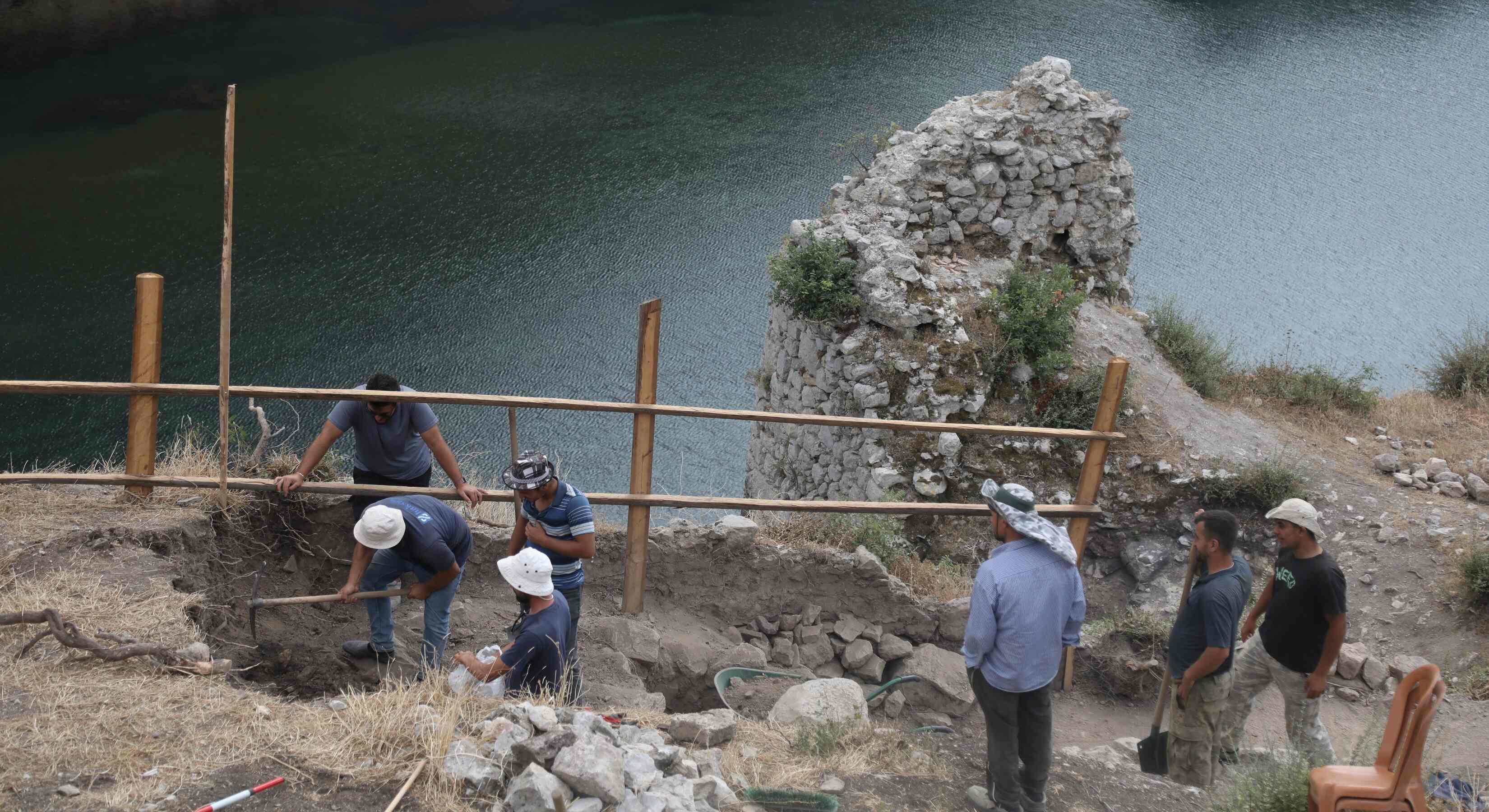
Archaeological excavations launched last year at Asarkale fortress in the Bafra district of Samsun have uncovered cisterns, a temple, a stepped tunnel and other structures dating back to antiquity.
Built by Pontic King Mithradates VI Eupator, Asarkale has been the focus of extensive excavations that shed light on the Hellenistic era. The work is carried out under the leadership of Kenan Sürül, director of the Samsun Archaeology Museum, with support from the Samsun Governor’s Investment Monitoring and Coordination Directorate, the Metropolitan Municipality and the Bafra Municipality.
A team of nine faculty members and 10 doctoral and graduate students from Ondokuz Mayıs University (OMÜ) has so far uncovered the fortress walls, cisterns, temple, stepped tunnels and command rooms.
Associate Professor Kasım Oyarçin, an archaeologist at OMÜ’s Faculty of Humanities and Social Sciences and scientific consultant for the dig, said the excavations have been ongoing for a year.
“In Asarkale, we have uncovered two cisterns, a prison, a furnace and several rooms used in the fortress,” Oyarçin told the state-run Anadolu Agency. “We are trying to locate the exit of the stepped tunnel. The work is progressing rapidly, and if it continues this way, we plan to reveal many of the fortress structures in a short time. We initially believed the earliest human traces here dated to the Pontic Kingdom, but an open-air sacred temple was uncovered. This sanctuary dates back to the fifth century B.C., contemporary with the Paphlagonian rock tombs along the Kızılırmak River. While the area was a settlement at the time, its use as a fortress began during the reign of Mithradates VI Eupator.”
Oyarçin noted that numerous cannonballs, arrowheads and coins were found during the excavations.
“With Mithradates’ defeat in the war between Byzantium and Pontus, the fortress was abandoned for a long period,” he explained. “It was reoccupied during the Byzantine period and later used in the Seljuk era. Rising at a 45-degree angle over the Kızılırmak, the fortress controlled trade routes and agricultural lands. The open-air sanctuary predates the construction of the fortress by about 400 years. Many cannonballs, arrowheads and coins have been uncovered. Around 150 cannonballs were retrieved in a burned state due to a fire.”
Hasan Dikmen, head of the Bafra Archaeology and Ethnography Museum, said the excavations began with clearing vegetation.
“We are working to bring Asarkale to light quickly,” he said. “Within one year, most of the architectural structures will have been unearthed. Next month, we plan to begin restoration work to rebuild the fortress walls. Temporary restorations will be carried out to prevent the excavated walls from collapsing.”